Week I: Berlin and the Long History of Cosmopolitan Germany
As you can see in the
accompanying syllabus, we have divided the seminar into
weekly thematic clusters. The seminar opens with a walking tour of Prenzlauer Berg, the
ethnically mixed, former East German neighborhood where we will be living, and there will
be a reception the first evening hosted by Professors Peterson and Shandley at their
apartment. We start the academic portion of the seminar on Monday by taking a close look
at the issue of what it means to be German, initially in terms of citizenship and ultimately
membership in the German cultural community. Monday we discuss the citizenship law of
2000, particularly as it relates to Germany’s large Turkish/Muslim population. At the urging
of the 2012 Summer Scholars, we have moved our walking tour of Kreuzberg, Berlin’s bestknown
multi-cultural neighborhood to the first Tuesday, because they thought, and we
agreed, that it was important to experience Berlin’s diversity at the start of the seminar. The
X-berg Tag, led by a Muslim woman from Kreuzberg, includes a visit to a mosque and lunch
at a Turkish restaurant.
http://www.xberg-tag.de/
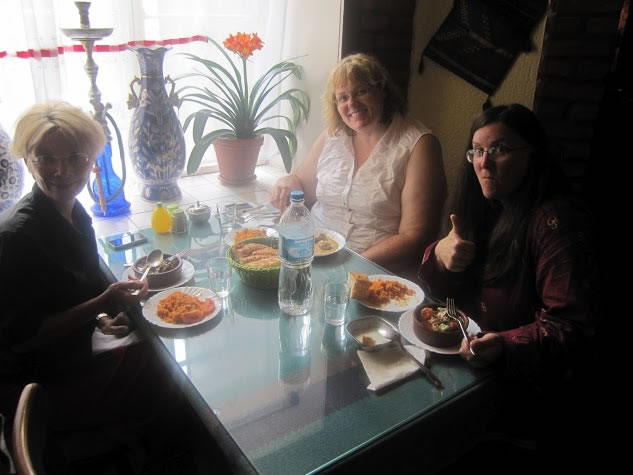
It is our expectation that this will be the first of many visits to various parts of Berlin.
We devote Wednesday’s seminar to a discussion of the long history of migration to
Germany. Dr. Barbara Meier-de Haan, who curated the exhibit “Zuwanderungsland
Deutschland” at the German Historical Museum, and Carola Jüllig, who put together the
museum’s exhibit “Fremde” will lead the discussion.
http://www.dhm.de/
On Thursday we
hold the first session devoted to literature. Our text is Adelbert von Chamisso’s Peter
Schlemihls wundersame Geschichte, and we want to pay particular attention to the way in which
the author, an eighteenth-century migrant from France who became a mainstay of German
Romanticism, thematizes issues of integration and acculturation. Chamisso is also the
namesake of an important literary prize awarded every year since 1985 for “contributions to
German literature” by writers who are not native speakers of German, and we will be
reading works by a number of Chamisso-Preis winners. Friday, we take an excursion to
Potsdam, where we will see the results of Prussia’s long-term policy of encouraging
migration, namely, the Holländisches Viertel, the Russische Kolonie, and Schloß Sans Souci.
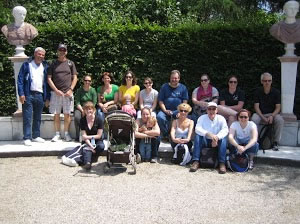
You will have noticed that we plan, with two exceptions, to hold seminar sessions
five mornings a week. Participants will have most afternoons and weekends free to
experience Berlin on their own, and we have built in two longer weekends to give
participants to travel further afield. Since many of the texts that we have selected for the
seminar are set in Berlin, we hope you will take advantage of all the city has to offer to aid in
your understanding of this material. We realize how important is it for teachers, particularly
language teachers, to immerse themselves in the culture, and so we don't want to prescribe
what you do during your free time. There will normally be readings for each seminar session,
and we will also recommend restaurants, clubs, theaters and cinemas where your experiences
will add to an understanding of the seminar's material. Now that we have see several
productions at the post-migrant theater in Kreuzberg’s Ballhaus Naunynstrasse, we plan to
organize at least one evening there.
http://www.ballhausnaunynstrasse.de/
Our program assistant, a native German who studied and now lives in Berlin, is
particularly good at suggesting things to do in the city, and she will also be available for
minor and major emergencies. We hope that you spend considerable time simply exploring
the city on your own, and we will be holding informal office hours (a Stammtisch) in various
parts of the city most afternoons to encourage you to see more. We also want you to report
back, if you find things that might be of interest to the seminar as a whole, and feel free to
ask the directors for their suggestions and organizational support regarding anything that you
want to see or do during your stay in Berlin.
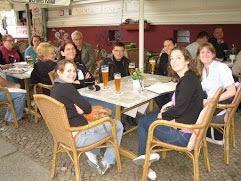
Week Two: Jewish Germans, German Jews, or Jews in Germany
We devote the seminar's second week to the theme of Jews in Germany, whom one
might also refer to as German Jews or Jewish Germans. In other words, even naming this
important group raises issues that have to do with identity and the role of migrants in
German culture. The purpose of this section is to displace the Holocaust as the focus of
German-Jewish history and instead discuss how Jews have negotiated their relationship with
German culture from 1800 to the present. The choices that Jews faced, particularly in the
19th century, were: to maintain an autonomous community that interacted sparingly with the
gentile population; to convert, intermarry and assimilate, i.e., to become German (Herz); or
to negotiate a hybrid identity, which might condemn German Jews to living with a"bifurcated soul" (Mendes-Flohr, Volkov).
Monday begins with an introduction to Daniel Liebeskind's architecturally
provocative museum provided by Karin Grimme from JMB's education department. http://www.jmberlin.de/
She or one of JMB’s expert guides will also lead us through the
Museum's permanent exhibit. We intend to pay particular attention to 18th and 19th-century
salon culture, to the role of Eastern European Jews, and to the work of Else Ury, the author
of the popular "Nesthäkchen" novels, which chronicle the life of a girl in early 20th-century
Berlin. On Tuesday again at the suggestion of the 2012 Summer Scholars, we have arranged
an introduction to the archives of the Leo Baeck Institut by the director Aubrey Pommeranz
followed by work with authentic documents related to Jewish life in Berlin. The two days at
the JMB provide background for Wednesday's discussion of Gotthold Ephriam Lessing’s
Nathan der Weise. Not only is the play’s protagonist a thinly disguised version of Moses
Mendelssohn, but it also promotes the ideal of tolerance in a manner that has resonated in
Germany for more than two centuries—with some notable exceptions. Thursday, we tour
the old Jewish quarter of Berlin, the Scheunen Viertel, which contains such highlights as
Hackischer Markt, the Neue Synagoge and its Centrum Judaicum, the Jewish cemetery in
Große Hamburger Strasse, where Mendelsohn is buried, and a host of other nearby sites.
From Orthodox migrants from rural Poland and Russia to largely assimilated middle class
Jews, including such intellectuals as Gershom Shalom and Leo Baeck, this section of Berlin
was where every sector of the city's Jewish community interacted. There will not be a
seminar meeting on Friday to give you the first of two long weekends.
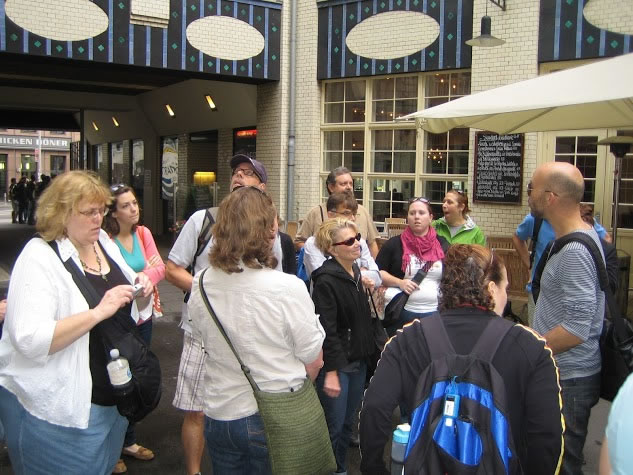
Week Three: From Guest Worker to Cosmopolitan Citizen
If German Jews' struggle to find a cultural foothold in Germany lasted for centuries
and ended in disaster, it is scarcely surprising that the migrants from southern Europe and
Turkey who arrived in West Germany after 1961 continue to face difficult integration issues.
Not only did the mostly Turkish "Gastarbeiter" we concentrate on during the third and fourth
weeks of the seminar face particularly challenging linguistic, cultural, and religious barriers,
but their German hosts had also never really considered the possibility that these workers
might become anything other than temporary residents. But remain they did. Indeed, they
married, had children, started businesses, and established communities just as other groups
of people with shared backgrounds had done. They also learned German, and, within a
generation, began producing a body of German-language literature and film that narrates the
fates and desires of what had become Germany's largest migrant group. In so doing, they
inserted themselves into the center of contemporary German culture.
On Monday, we set the theoretical stage for our discussions of issues such as
integration, acculturation and assimilation, particularly as they relate to Turkish migrants.
The essayist, poet, and novelist Zafer Senocak will lead a discussion that centers on his
recent book Deutschsein: Eine Aufklärungsschrift. Senocak poses a key question for all of our
subsequent deliberations: “Wie viel Vielfalt ertragen wir?” Possible answers begin with“none,” which would necessitate a far more homogeneous population than Germany has
ever had, and they range all the way to radical multi-culturalism, an idea that a certain portion
of the population finds threatening. But, in order to understand the literature and film at the
heart of the seminar in their cultural and historical context, we need to explore a broad set of
options.
On Tuesday, we look at two pioneering Turkish German writers: Aras Ören, a longtime
Berlin resident whose narrative poem “Was will Niyazi in der Naunynstraße,” was one of
the first works to chronicle the lives of Turkish workers in Germany. We will also discuss
the short story “Mutter Zunge,” by Emine Sevgi Özdamar. In addition to what their work
says, we want to consider its status. Ören wrote in Turkish, but was quickly translated into
German, whereas Özdamar’s writing illustrates a kind of productive alienation from the
German language, already evident in her story’s title: the standard German word is"Muttersprache" rather than her reworking of the Turkish term into a new word that is similar
to the English "mother tongue." An important question is therefore how or whether these
two authors belong to German culture. Ören received the initial Chamisso-Preis in 1985;Özdamar won in 1999.
Wednesday’s text is Tefvik Baser’s 1986 film, 40(2) Meter Deutschland, which tells the
story of a young bride who arrives in Germany from Turkey with no understanding of the
country or its language. One day, she discovers that her husband locks her into their tiny
apartment when he goes to work. The marriage and her plight within it thus function as a
metaphor for migrants' twin fears of agoraphobia and claustrophobia, the need both to
control space and to overcome barriers. Ören’s, Özdamar's and Baser's work is emblematic
of the first generation of migrant authors and filmmakers from Turkey, who arrived in
Germany as adults. Like Chamisso at the beginning of the nineteenth century, they often
concentrated on the experience of immigration and the struggle faced by migrants who
wanted to integrate themselves into German culture.
Thursday, we move on to what might be thought of as the second generation of
Turkish-German literature with a discussion of Renan Demirkan's short 1991 novel
Schwarzer Tee mit Drei Stück Zucker. Although she actually preceded Özdamar, Demirkan
arrived in Germany as a child in 1962. While still concentrating on immigrant identity issues,
her novel no longer confines itself to strictly Turkish characters. Instead, the narrator, who is
married to an Austrian, spends the novel contemplating the cultural identity—or identities—
of her child. Marriage no longer functions as a metaphor for cultural isolation, but as a
means to raise the thorny issue of a bi-cultural identity. Friday we plan to deal with one of
the more remarkable developments of the past ten years, namely the work of the comedian
ensemble "Kanak Attak." Starting by taking what had been a term of abuse for foreigners,"Kanaken," and turning it into a hip-hop badge of honor, the group's guerilla journalism has
given voice to the many contradictions and pressures that ethnic Turks in Germany face
today. The comedians also turn the tables, asking, for example, whether "bio-Deutschen" have
isolated themselves in "white ghettos." We will view several episodes from "Kanak-TV,"
situating their provocation in the larger discussions of integration, assimlation, and
acculturation that we will have developed in the seminar so far. We will also consider Mutlu
Ergün’s pointed, but humorous answer to the question, “Wo kommst du her?”
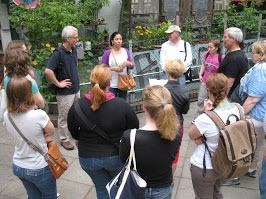
Week Four: From Guest Worker to Cosmopolitan Citizen, continued
Our second week dealing with issues involving Turkish-Germans starts with a
discussion of Yasemin Samdereli’s 2011 film Almanya? Willkomme in Deutschland. Among
other things, the film charts the lives of a third generation of Turkish-Germans, namely,
those who were born in Germany and who may or may not have much of a connection to
their Turkish heritage. Tuesday morning we will discuss Imran Ayata’s recent novel Mein
Name ist Revolution (2011) in preparation for his participation in the seminar on Wednesday.
In addition to having been one of the founders of Kanak-Attak, Ayata now works as the
managing director of a public relations firm in Berlin. Both his trajectory and his fiction
contradict the usual stereotypes about migrants in Germany.
Thursday we take a look at a recent television treatment of Turks in Germany.
Türkisch für Anfänger follows the lives of a German woman and her two teenage children as
she moves in and eventually marries her middle-class Turkish lover, who himself has two
teenagers. The result, which is set in Berlin's Neukölln neighborhood, combines a Brady
Bunch blended family trope with an attempt to address the everyday challenges of bi- or
multi-cultural life in contemporary Germany. The seminar does not meet on Friday to give
you a second longer weekend.
Week Five: From “Multi-Kulti” to ”Transnational Identities”
We have titled week five "From 'Multi-Kulti,' to ‘Transnational Identities,’" and it is
during this final week that we ask to what degree globalization is undermining ethnically
based identities. Monday we discuss the work of Fatih Akin, Germany's most critically
acclaimed filmmaker of the past decade. Although he is an ethnic Turk who was raised in
Hamburg, Akin's films narrate a broader set of problems facing almost all immigrant
communities in Germany. We focus on his 2007 film Auf der anderen Seite, a film whose
German and Turkish protagonists seem equally at home and equally adrift in both Germany
and Turkey. For example, the amazingly successful son of a guest worker gives up his
position as a professor of German literature, as a Goethe specialist no less, to settle in
Istanbul, where he buys a German bookstore. Tuesday, we turn to the work of Wladimer
Kaminer, one of contemporary Germany's best-selling and most prolific writers. Kaminer, a
Russian Jew who immigrated to Berlin in 1990, writes short, humorous, non-fiction stories
about life in today's multiethnic Germany. We will read selections from Schönhauser Allee,
where Kaminer comically narrates the process of his own family's integration into life in
Germany's capital city. You will recognize much of what Kaminer writes in part because he
lives in Prenzlauer Berg, and if you don't see him wandering about the neighborhood, you
might want to take a look at the Russendisko that he stages in Café Bürger most Saturday
nights. We will also be reading his "Geschäftstarnungen" to draw together our themes of
German vs. cosmopolitan identities. In this piece, Kaminer realizes that his favorite Turkish
restaurant is staffed by Bulgarians, while next door, all the waiters in the Italian restaurant are
Greeks. He ends up wondering if any ethnic identities, including German, are or can be
authentic. Wednesday, we shift to Olga Grjasnowa’s 2012 novel, Der Russe ist einer, der Birken
liebt. The novel’s heroine is a Jewish refugee from Azerbaijan who came to Germany with
her family and acquired German citizenship. A talented linguist—she speaks Russian,
German, Turkish, French and Arabic—she too is at home everywhere and nowhere. In
contrast to Kaminer, who has settled comfortably in Berlin, Grjasnowa’s main character lets
us see both that the issue of migration remains central to our understanding of twenty-first
century Germany and that the relationship between Germany and the country’s migrants
remains far from settled for either side.





